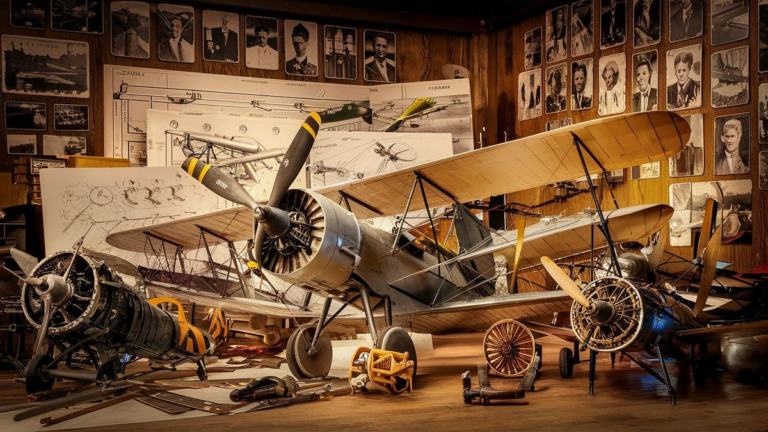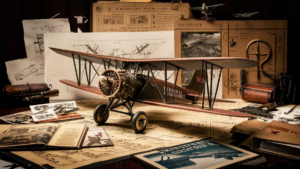Throughout history, the quest for human flight has been a captivating journey filled with innovation, experimentation, and the pursuit of the seemingly impossible. While the Wright brothers are widely credited with achieving the first successful powered flight in 1903, the story of aviation stretches far beyond their groundbreaking achievement. Let’s delve into the fascinating history of individuals who contributed to the invention of the airplane before the Wright brothers.
The Early Pioneers of Flight
Long before the Wright brothers took to the skies, numerous inventors and visionaries were captivated by the idea of flying. One such figure was Sir George Cayley, a British engineer often referred to as the “father of aviation.” In the early 19th century, Cayley laid the groundwork for modern aerodynamics and designed the first successful human-carrying glider in 1853.
Another notable figure in aviation history is Otto Lilienthal, a German pioneer who made significant advancements in glider technology during the late 19th century. Lilienthal’s work influenced a generation of inventors, including the Wright brothers, with his series of successful glider flights in the 1890s.
Contenders for the Title of First Flight
While the Wright brothers’ achievement in 1903 marked a pivotal moment in aviation history, there were other inventors who claimed to have achieved powered flight before them.
One such contender was Gustave Whitehead, a German immigrant to the United States who reportedly made a powered flight in 1901, two years before the Wright brothers. Although Whitehead’s claims remain a subject of debate among historians, some believe that he deserves recognition for his contributions to early aviation.
Another figure often mentioned in discussions about pre-Wright flight is Richard Pearse, a New Zealand inventor who allegedly made a powered flight in 1903, several months before the Wright brothers’ historic achievement. While Pearse’s flight remains the subject of speculation and controversy, his work underscores the global nature of aviation innovation during this period.
The Legacy of Early Aviation Pioneers
Regardless of who can claim the title of the first successful powered flight, the contributions of early aviation pioneers laid the foundation for the modern aerospace industry. From Sir George Cayley’s principles of aerodynamics to Otto Lilienthal’s experiments in glider flight, each inventor played a crucial role in advancing the science of flight.
While the Wright brothers’ accomplishment rightfully holds a revered place in history, it is essential to acknowledge the diverse cast of characters who contributed to the dream of human flight. By recognizing the collective efforts of these pioneers, we gain a deeper appreciation for the rich tapestry of innovation that has shaped the world of aviation.
In Conclusion
The story of who invented the airplane before the Wright brothers is a complex and multifaceted narrative that highlights the ingenuity, perseverance, and ambition of individuals throughout history. While definitive answers may remain elusive, the legacy of these early aviation pioneers continues to inspire future generations of innovators.
Early Aviation Challenges
Despite the remarkable achievements of early aviation pioneers, the journey toward sustained flight was fraught with challenges and setbacks. One significant hurdle was the development of suitable engines to power aircraft. Early engines were often heavy, inefficient, and prone to mechanical failures, limiting the feasibility of powered flight.
Additionally, aerodynamic understanding was still in its infancy during the late 19th and early 20th centuries. Inventors faced difficulties in designing stable and controllable aircraft that could withstand the forces of flight.
Technological Advancements
Overcoming these challenges required relentless experimentation and innovation. As inventors pushed the boundaries of technology, advancements in materials, propulsion systems, and aerodynamic principles gradually paved the way for more reliable and capable aircraft.
Key developments, such as the introduction of lightweight aluminum alloys and the refinement of internal combustion engines, played crucial roles in the evolution of aviation technology.
Frequently Asked Questions
1. Were there any other significant early aviation pioneers besides those mentioned?
2. How did advancements in aviation impact society beyond transportation?
3. What role did government support play in the development of early aircraft?
| Aviation Pioneer | Contribution |
|---|---|
| Leonardo da Vinci | Pioneering designs and concepts for flying machines during the Renaissance. |
| Samuel Pierpont Langley | Experimental flights and research in aerodynamics and aviation engineering. |
| Clement Ader | Claimed to have achieved powered flight in a steam-powered aircraft in the late 19th century. |
See also:






